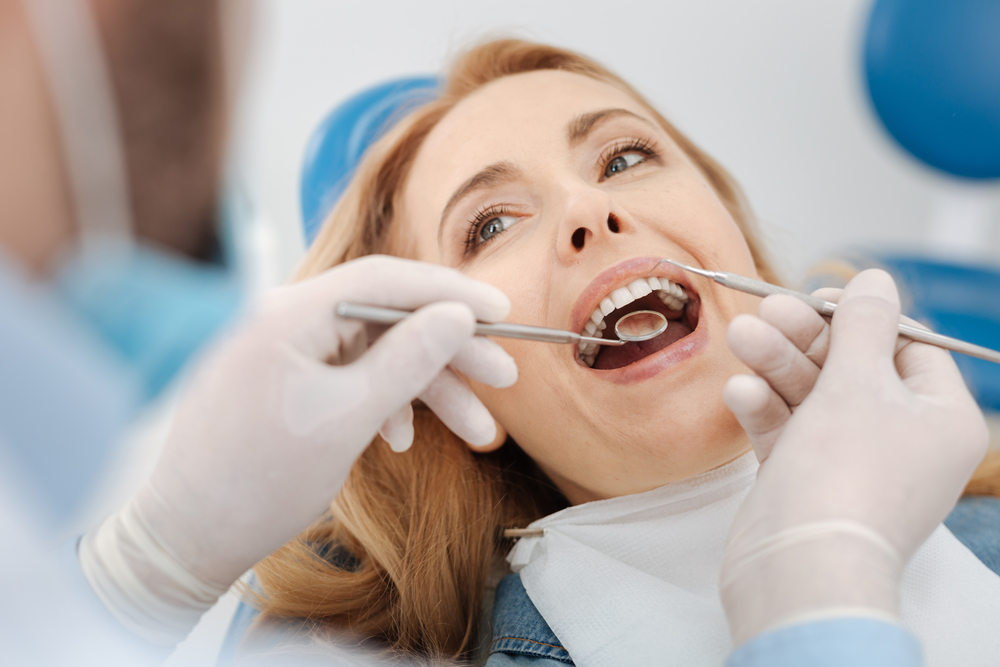Healthy nutrition for healthy teeth

Here are 7 ways to keep your teeth strong and your gums healthy. These are the keys not only to good oral health but also to good health in general.
This post is sponsored by GMHBA
1. Eat a healthy diet
Concentrate on fresh vegetables and fruits (the crunchier, the better), legumes, whole grains, dairy, meat, fish, chicken, eggs, nuts and healthy fats.
Avoid soft, over-processed, discretionary foods - often called ‘junk’ or ‘treat’ foods - that don’t need much chewing and have added sugar, added salt and bad fats. You know the ones – cakes, biscuits, pies, potato chips, pizza, confectionery, soft drinks and alcohol.
Make sure you eat foods that are crisp and crunchy so they encourage chewing and get those jaws working properly. A healthy diet is also 'insurance' for your future health, protecting you from diabetes, heart disease, various types of cancer, high blood pressure, gout, eye problems and osteoporosis.
You still need to exercise and reduce stress (particularly if you grind your teeth at night) but eating is something we do every day – several times a day - and it's quicker to substitute a healthy tuna and salad sandwich for a fast food junk meal, than to find 30 minutes to exercise each day.
2. Snack less often
Each time we eat or drink, our saliva needs to repair damaged tooth enamel (remineralization), caused by acid build-up. This process takes two or three hours, so those who graze or constantly snack interfere with this process. Avoid fermentable carbs such as those found in white flour products like biscuits, bread, pretzels and cakes as well as sticky foods.
Chewing sugar-free gum between meals can help fight tooth decay as it stimulates the flow of saliva which bathes the teeth and moves any leftover food away.
Soft drinks, certain fruit juices like grapefruit juice, energy and sports drinks are high in acidity which can erode tooth enamel. Say “No” to them and swap to plain tap water for quenching your thirst.
3. Drink more water
 Water is the best beverage for overall health — including dental health. Drink water with and after every meal. This can help wash out the negative effects of sticky and acidic foods and beverages in between brushing. You can enliven water by adding a few rinds of lemon or lime to a jug of plain water, or add a few strawberries or even cucumber peels.
Water is the best beverage for overall health — including dental health. Drink water with and after every meal. This can help wash out the negative effects of sticky and acidic foods and beverages in between brushing. You can enliven water by adding a few rinds of lemon or lime to a jug of plain water, or add a few strawberries or even cucumber peels.
4. Brush twice a day
 Take your time, moving the toothbrush in gentle, circular motions to remove plaque. Do not swallow. Invest in an electric toothbrush if you’re not sure you’re brushing correctly. Unremoved plaque can harden, leading to calculus build-up and gingivitis (early gum disease).
Take your time, moving the toothbrush in gentle, circular motions to remove plaque. Do not swallow. Invest in an electric toothbrush if you’re not sure you’re brushing correctly. Unremoved plaque can harden, leading to calculus build-up and gingivitis (early gum disease).
5. Use a toothpaste with fluoride
When it comes to toothpaste, make sure it contains fluoride. Fluoride is a mineral that occurs naturally in all water sources, including the oceans. The optimal level is around 1 part per million.
 In the 1930s, researchers found that people who grew up drinking naturally fluoridated water had up to two-thirds fewer cavities than people living in areas without fluoridated water. Studies since then have repeatedly shown that when fluoride is added to a community's water supply, tooth decay decreases. You can also get your dentist to apply a liquid solution of fluoride directly to your teeth at each check-up.
In the 1930s, researchers found that people who grew up drinking naturally fluoridated water had up to two-thirds fewer cavities than people living in areas without fluoridated water. Studies since then have repeatedly shown that when fluoride is added to a community's water supply, tooth decay decreases. You can also get your dentist to apply a liquid solution of fluoride directly to your teeth at each check-up.
6. Use floss daily
 Don’t neglect flossing between your teeth. It’s really a way to stimulate the gums and decrease plaque. Flossing once a day is usually enough to reap these benefits. Some dentists prefer their clients to use an interdental brush instead as they think it is more effective in removing food particles and plaque stuck between teeth
Don’t neglect flossing between your teeth. It’s really a way to stimulate the gums and decrease plaque. Flossing once a day is usually enough to reap these benefits. Some dentists prefer their clients to use an interdental brush instead as they think it is more effective in removing food particles and plaque stuck between teeth
7. See your dentist at least twice a year
Your own everyday habits are crucial to the overall health of your teeth. Still, even the most dutiful of us still need to visit the dentist. At a minimum, you should see your dentist and/or hygienist for cleanings and check-ups twice a year.
Many health insurance companies provide cover for more frequent dental check-ups. If this is your situation, take advantage of it. Seeing a dentist is especially helpful if you have a history of dental problems, such as gingivitis or weak teeth with many cavities (I know, I’m one).

The bottom line
Nutrition and healthy eating are integral to maintaining strong teeth and healthy gums. Make sure you follow the steps outlined above.
For more on health insurance and dental care, head to https://www.gmhba.com.au/dentalcare




